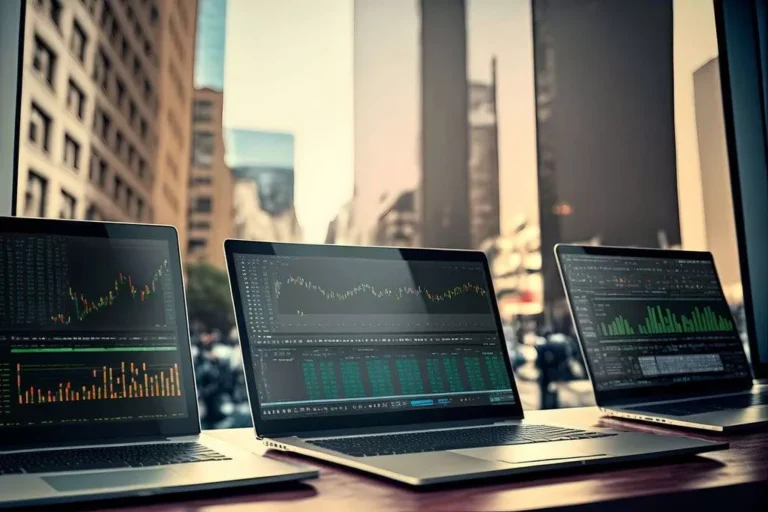An example of such a model is Curve Finance, which combines CPMM and CSMM fashions to supply a capital-efficient platform to exchange pegged property. Uniswap is an Ethereum-based decentralized trade that leverages AMMs to offer a liquidity-rich DEX for merchants whereas also performing as a reliable platform for investors. AMMs work by changing the traditional order guide mannequin with mathematical formulas and logic wrapped in smart contracts. X and y are equal portions of assets in a liquidity pool, and k is the complete or fixed amount of pool liquidity. So there aren’t any counterparties required, but somebody must still assemble the market, right? The liquidity within the good contract must still be given by customers often identified as liquidity providers (LPs).
AMMs as an alternative rely on liquidity that is sourced from different users and pooled together, an idea known as a liquidity pool. In liquidity pools, liquidity suppliers “lock” equal amounts of two or more tokens into a sensible contract to be used as liquidity for trades from other users. An automated market maker (AMM) is an autonomous protocol that decentralized crypto exchanges (DEXs) use to facilitate crypto trades on a blockchain. Instead of buying and selling with a counterparty, AMMs allow users to commerce their digital belongings in opposition to liquidity stored in sensible contracts, called liquidity swimming pools.

Automated market makers (AMMs) are a sort of algorithm constructed on blockchain expertise that automates the process of executing trades on decentralized exchanges. AMMs are an essential facet of the rising decentralized finance ecosystem and are an innovation that reflects the core ideals of crypto. Because AMMs are constructed on blockchains and utilize good contracts, trades may be performed at any time, in a permissionless way, and for a lot lower fees than on a traditional change. When somebody needs to buy or promote an asset on a decentralized exchange, they simply submit the trade to the smart contract and it’ll be mechanically executed at whatever the present market worth is. Traditional exchanges depend on liquidity either from their reserves or supplied by individual market makers to facilitate trades. In contrast, AMMs use liquidity sourced from users and consolidated into what is called a liquidity pool.
How Do Amms Work?
This mannequin is much like the CPMM, however the multiplication in the formulation is replaced with addition. The liquidity always equals the entire amount of token A plus the total quantity of token B. To obtain this, Oyster AMM makes use of a structure referred to as ‘Pearl,’ a set of concentrated liquidity covering a worth point, and all open limit orders are on the same price point. See the determine below for a simplified representation of how liquidity is structured in Oyster AMM. To illustrate, one of the world’s largest DEXes, Uniswap, had over $8.sixty six billion in total worth locked in late December 2021. Looking at historic performances, property beneath management are inclined to fluctuate, following the value of the base layer’s cash.
An thrilling future awaits us, full of recent and innovative AMM designs that will form the future of the monetary markets. One such AMM protocol using the hybrid CFMM model is Curve which combines the CPMM and CSMM fashions utilizing a fancy formula to help reduce the worth impact or the slippage of trades. Other than arbitraging alternatives, when giant orders (relative to the pool size) are placed in AMMs, it could additionally trigger notable slippage for the traders. Like in the instance for Alice, she paid 2,424 USDC for 1 ETH, larger than the market price of two,four hundred USDC.
Be A Part Of Our Free Newsletter For Day By Day Crypto Updates!
Virtual Automated Market Makers, or vAMMs for short created by the AMM protocol Perpetual Protocol, allows for perpetual trading on DEXs. The above issues are being tackled by initiatives constructing their own AMM models, such as Hybrid CFMMs, dAMMs, vAMMs, PMMs, CLMMs, and so forth., to call a number of. In this section, we shall review the mentioned models and the way they differ from the normal AMMs. In perfect cases, we should always see a convex AMM curve, i.e., you’ve more upside if there are heavy fluctuations or divergence in costs.
- When a trader uses a DEX, the exact mechanism of swapping one token for another is understandably totally different to that of traditional centralized exchanges.
- For example, if a token’s liquidity provide exceeds demand in the liquidity pool, it’ll result in a fall in its costs, and vice versa.
- Hybrid CFMMs allow extraordinarily low price impression trades by using an trade fee curve that is mostly linear and becomes parabolic solely as quickly as the liquidity pool is pushed to its limits.
- One of the most significant is ‘impermanent loss,’ a short lived loss that liquidity suppliers can face if the worth of their deposited tokens fluctuates.
AMMs have the distinctive capacity to create and deal with entire markets using mathematical equations which can’t be altered. This varieties the spine of DEX trading, where no individual use is required to prove eligibility to commerce. Where x and y are the reserves within the liquidity pool and a(t) and w(t) are the parameters needed to be dynamically changed. The second downside of those conventional Automated Market Makers is capital effectivity and slippage. It allowed for publicity to multiple belongings in the pool concurrently and allowed us to swap between any two assets within the pool. As seen above, CPMMs rely on the principle that the product of the reserves remains unchanged earlier than and after the trade has taken place.
From an aggregated listing of buy and promote orders, the customer and vendor can either bid to purchase or promote an asset at a selected price. The distinction between the highest amms models bid and the lowest ask of an asset is the unfold. Typically, exchanges with larger liquidity could have a lower spread and vice versa.
Execs And Cons Of Amms In Defi
As per the formulation, if the supply of 1 token (x) will increase, the provision of the opposite token (y) must decrease, and vice versa, to uphold the constant worth (k). Finally, it transfers the desired quantity of Ethereum from the pool to the customer’s pockets. This model is implemented along with the token swap mannequin in Bancor V2 protocol.
For example, Bancor three has built-in Chainlink Automation to assist support its auto-compounding characteristic. However, the introduction of UTXO-based good contract architectures in Cardano and Ergo, for example, allows the implementation of Order Book models by DEXes. This improvement makes it potential for deployment of refined options present in traditional exchanges like restrict orders, cease loss, algorithmic buying and selling methods and extra, possible in DeFi. It is an edge and would give developers of trustless DEXes an advantage that they might leverage to slim the gap with traditional exchanges. In an AMM, anyone can become a liquidity provider by depositing tokens right into a liquidity pool. These swimming pools are then used to execute trades, with the trading value determined by the ratio of the tokens within the pool.
The Constant Product Market Maker (CPMM) model, spearheaded by Bancor, was the primary type of CFMM to emerge. This model is foundational to many AMM-based Decentralized Exchanges (DEXs). Users should first contribute UNI (y) tokens to the pool to have the ability to purchase ETH (x) on Uniswap. It is price noting that k requires that the quantity of liquidity stay fixed. As a result, adding UNI tokens increases one side of the pool whereas reducing the opposite (removing ETH).
Each token in the liquidity pool is assigned a weight, representing its relative importance or worth inside the pool. These weights can be determined primarily based on elements such as token liquidity, market capitalization, or user-defined parameters. The second method of a dynamic AMM is by using information from oracles such as ChainLink to calculate the implied volatility (the market’s forecast of the volatility of a specific asset). Hybrid CFMMs mix a quantity of traditional AMM features and particular parameters to evolve into a better AMM model.
Where R represents the reserves of every asset and γ is the transaction charge. MoonPay additionally makes it straightforward to promote crypto when you resolve it is time to money out. Simply enter the amount of the token you’d wish to sell and enter the details the place you want to receive your funds. Uniswap is a market maker giant with over $3 billion total value locked (TVL), dominating over 59% of overall DEX quantity.
Hybrid Amms
The answer has been to incorporate elements of some or the entire AMMs sorts to provide a so-called hybrid AMM. An Automated Market Maker (AMM) is an algorithmic trade matching system which forms a key part of decentralized exchanges (DEXes). Front-running is a apply the place merchants exploit their knowledge of pending transactions to execute trades that benefit from the price actions brought on by these transactions. This unethical follow can negatively impression the fairness and integrity of AMMs. By assigning totally different weights to tokens, Weighted Average Price AMMs allow the creation of customized swimming pools that mirror particular market dynamics or user preferences.

Both classes use non-custodial smart contracts, and a deterministic pricing rule is carried out between two or extra swimming pools of tokens. A DeFi App can implement one type of AMM model or a mixture of several AMM models. The result is a hyperbola (blue line) that returns a linear trade fee for large components of the value curve and exponential prices when change charges close to the outer bounds. Traditional AMM designs require massive amounts of liquidity to achieve the identical degree of worth impact as an order book-based trade. This is due to the fact that a considerable portion of AMM liquidity is on the market solely when the pricing curve begins to turn exponential. As such, most liquidity won’t ever be utilized by rational traders because of the excessive price impact skilled.







